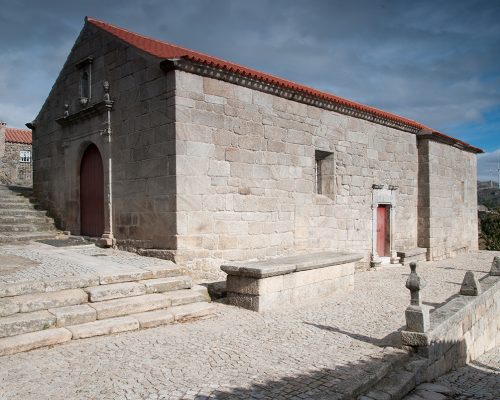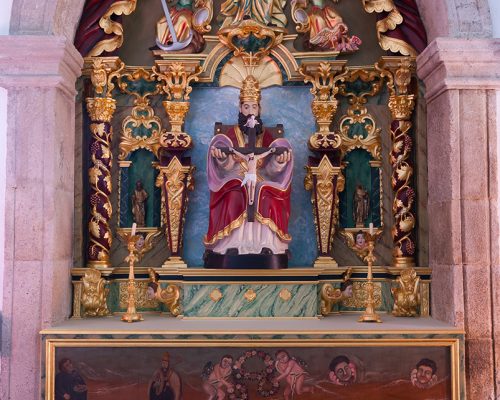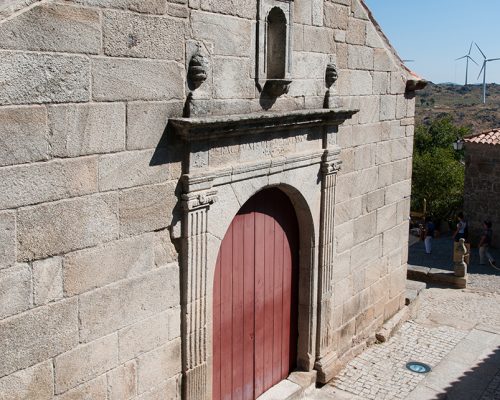Main Parish Church
Sortelha
Sortelha
The Main Parish Church, dedicated to Our Lady of the Snows, is located in the Church Square, within the walled perimeter. Originally it was a Romanesque church, probably founded in the 13th century, and of which important remains have been found in the archaeological excavations inside. The Bell Tower, isolated and located on a higher cliff, is also from this time. The original baptismal font may correspond to a piece currently preserved in the courtyard of a neighbouring house. The year, 1573, is carved into the current portal, which corresponds to the time of its expansion, resulting in its current appearance. It has a longitudinal plan, a single nave, cornice and cannon gargoyles. The main portal, in the Renaissance style, is characterised by a full arch, fluted pilasters, Ionic-inspired capital and armillary spheres. Inside the chancel, there is a Hispano-Arabic (Mudejar) lacquered ceiling, with a few fragments of tilework of the same style decorating the church's baseboard from its 16th century renovation, having been identified. The Renaissance pulpit, the national Mannerist style altarpieces, and the mural painting on the gospel side from the same period, along with the baptismal font, based on three steps, apparently from the Church of Mercy, are also noteworthy. On the side wall of the chancel there is a Gothic sculpture of Our Lady of the Snows with the baby Jesus in her arms. According to legend, the head of the sculpture was cut off by a Napoleonic soldier who wanted to ascertain whether the image was made of gold. It was the Deanery of the Royal Patronage and Commendation of the Order of Christ. In 2000, during the restoration work of the Historical Villages of Portugal programme, the columns that supported the choir, originally from the Church of Mercy and now preserved on the ground floor of the Parish Council, were removed. Until the 1940s, the church’s central structure was plastered on the outside in white, and only the chancel had exposed stone.





